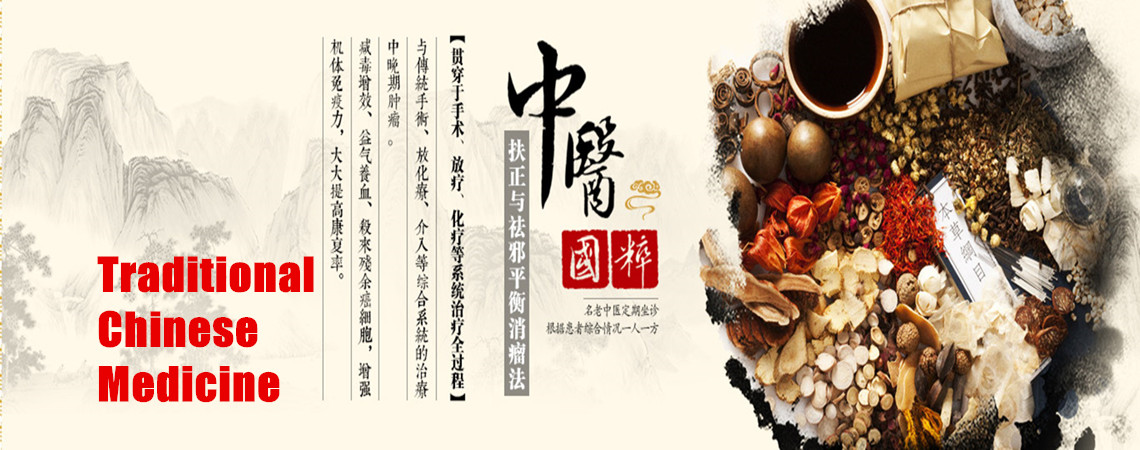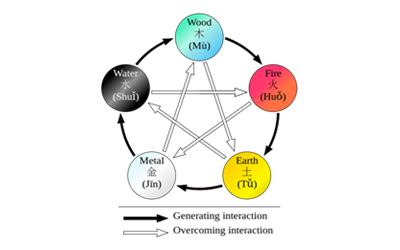
Theory of Five Elements
 Similar to the theory of Yin-yang, the theory of five elements - wood, fire, earth, metal and water - was an ancient philosophical concept used to explain the composition and phenomena of the physical universe. In traditional Chinese medicine the theory of five elements is used to interpret the relationship between the physiology and pathology of the human body and the natural environment. According to the theory, the five elements are in constant move and change, and the interdependence and mutual restraint of the five elements explain the complex connection between material objects as well as the unity between the human body and the natural world.
Similar to the theory of Yin-yang, the theory of five elements - wood, fire, earth, metal and water - was an ancient philosophical concept used to explain the composition and phenomena of the physical universe. In traditional Chinese medicine the theory of five elements is used to interpret the relationship between the physiology and pathology of the human body and the natural environment. According to the theory, the five elements are in constant move and change, and the interdependence and mutual restraint of the five elements explain the complex connection between material objects as well as the unity between the human body and the natural world.
The five elements emerged from an observation of the various groups of dynamic processes, functions and characteristics observed in the natural world. The aspects involved in each of the five elements are follows:
Fire: draught, heat, flaring, ascendance, movement, etc.
Wood: germination, extension, softness, harmony, flexibility, etc.
Metal: strength, firmness, killing, cutting, cleaning up, etc.
Earth: growing, changing, nourishing, producing, etc.
Water: moisture, cold, descending, flowing, etc.
The categorization of phenomena according to the five elements:
| Wood | Fire | Earth | Metal | Water | |
| Flavors | sour | bitter | sweet | pungent | salty |
| Zang | liver | heart | spleen | lung | kidney |
| Fu | gall bladder | s. intestine | stomach | l. intestine | urinary |
| Senses | eye | tongue | mouth | nose | ear |
| Tissue | tendon | vessel | muscle | hair/skin | bone |
| Directions | east | south | center | west | north |
| Changes | germinate | grow | transform | reap | store |
| Color | green | red | yellow | white | black |
The order of mutual promoting among the five elements is that wood promotes fire, fire promotes earth, earth promotes metal, metal promotes water, and promotes generates wood. In this way each of the five elements has this type of mutual promoting relationship with the other, thus promoting is circular and endless. According to the order of mutual restraining, however, wood restrains earth, metal restrains wood, etc. Each of the five elements also shares this restraining relationship with the other. Mutual promoting and mutual restraining are two aspects that cannot be separated. If there is no promoting, then there is no birth and growth. If there is no restraining, then there is no change and development for maintaining normal harmonious relations. Thus the movement and change of all things exists through their mutual promoting and restraining relationships. These relationships are the basis of the circulation of natural elements.
Encroaching and violating are the pathological conditions of the normal mutual promoting and restraining relationships. Encroaching denotes that the restraining of one of the five elements to another surpasses the normal level, while violating means that one of the five elements restrains the other opposite to the normal mutual restraining order.







 Ask Questions ?
Ask Questions ?